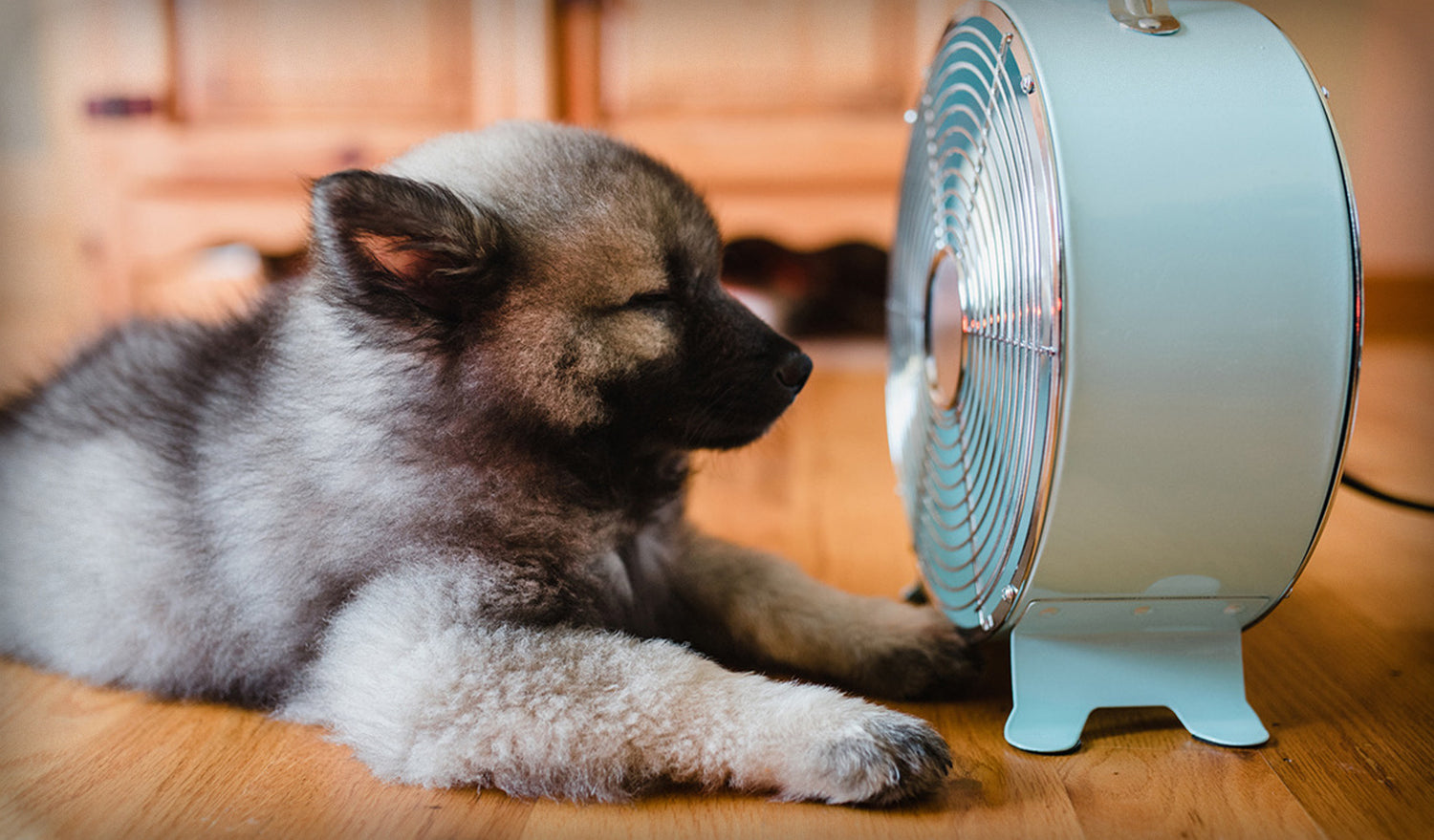
By: Dr. Kris Hansen
The days are getting longer, and the temperatures are rising. Summer is just around the corner. After a long winter, we are excited to get outside and enjoy the warm, sunny days. But while our dogs love to do everything with us, we need to remember that they may not enjoy the heat as much. In fact, too much heat can be dangerous for dogs. It is vitally important that we understand how to prevent problems caused by heat, recognize signs of heat distress, and know how to help our dogs if they are suffering from overheating.
While being outdoors with your furry best friend may seem like an ideal way to spend a day, we need to be aware that on the hotter days, dogs overheat more quickly than people, and they have a harder time cooling themselves down. When people spend time in the heat, our bodies cool us down through sweating. Dogs don’t have that advantage, though, as the only sweat glands they have are in their paw pads, and that is insufficient to cool down their entire bodies. The main way that dogs keep cool is by panting, but they simply can’t pant enough to cool off when overheated. This is why it is so important to keep your dog from getting too hot in the first place.
To keep your dog safe this summer, limit outside time on hot days. When you do go outside with your dog, keep it brief, try to stay in the shade, and bring water for your dog to drink. Take walks during the cooler parts of the day, such as in the early morning or in the evening and do your best to avoid pavement which can hold in heat and burn your dog’s paw pads. One way to soothe your furry friend’s pads on hot summer days is with Earth Animal’s Herbal Skin Relief Balm (will be IN STOCK soon). This relieving blend of herbs helps soothe and calm irritated skin. The Balm naturally assists in healing hot spots, licking wounds, dry, heated, irritated, or cracked paws, rashes, bug bites, and any skin sores while providing soothing relief! Apply it after a walk on hot asphalt, rocky trails, or woods with a lot of sticks and roots – they’ll feel better right away!
Exercise your dog outdoors less on hot days. If you go out to run errands, leave your dog at home in a climate-controlled space. Do not bring your dog with you and leave him in the car. Temperatures inside parked cars rise rapidly and leaving your dog in a car, even with the windows cracked open, can quickly take a deadly turn. Always make sure that your dog’s water bowl is filled with cool, fresh water, even when inside, to keep him hydrated.
If you do spend time outside with your dog this summer, know the signs of heat distress and what to do if you notice that your dog is having trouble. The two biggest heat-related dangers that you want to avoid are dehydration and heatstroke. Typically, dehydration will occur first, but heatstroke can come on quickly. If your dog is getting dehydrated, he will pant heavier, become lethargic, have thick saliva, dry nose, and gums, and will generally look unwell. If you notice signs of dehydration, get your dog some water immediately. If the dehydration is prolonged or severe, you may need to give your dog electrolyte water and take him to an emergency veterinarian for intravenous fluids. Dehydration is serious and can lead to severe health problems, so your best course of action is to keep your dog well hydrated in the first place.
Heatstroke can come on quickly and be deadly, so it is vital to treat symptoms of it immediately. If your dog is panting heavily, has difficulty standing and balancing, is breathing hard and quickly, is drooling a lot more than usual, and has bright red gums and tongue, he is suffering from the beginning stages of heatstroke and needs to be cooled down quickly. Get water on and in him as fast as possible by giving him cool water to drink and spraying him with a hose or getting him into a bathtub of cool water. You can also try placing very cold, wet towels or ice packs wrapped in towels on him and get him into the shade or, better yet, inside an air-conditioned space.
Take your dog’s temperature during the cool down process. Once it stabilizes to about 100 degrees, you can stop the cooling interventions. Call your veterinarian and bring your dog in to get checked to make sure he is OK. If the heatstroke advances, your dog will be extremely lethargic and barely move, his gums and tongue will turn white or light blue, his breathing will be labored and loud, and he won’t be able to control his bowel movements or urination. This is a medical emergency, and your dog needs to be seen by a veterinarian immediately. On your way to the veterinarian, do what you can to cool down your dog.
You and your dog are surely looking forward to a fun-filled summer. Keep these tips in mind to ensure that your dog stays safe while enjoying some summer fun with you.
EARTH ANIMAL PRODUCTS: Crafted by hand.. !!



